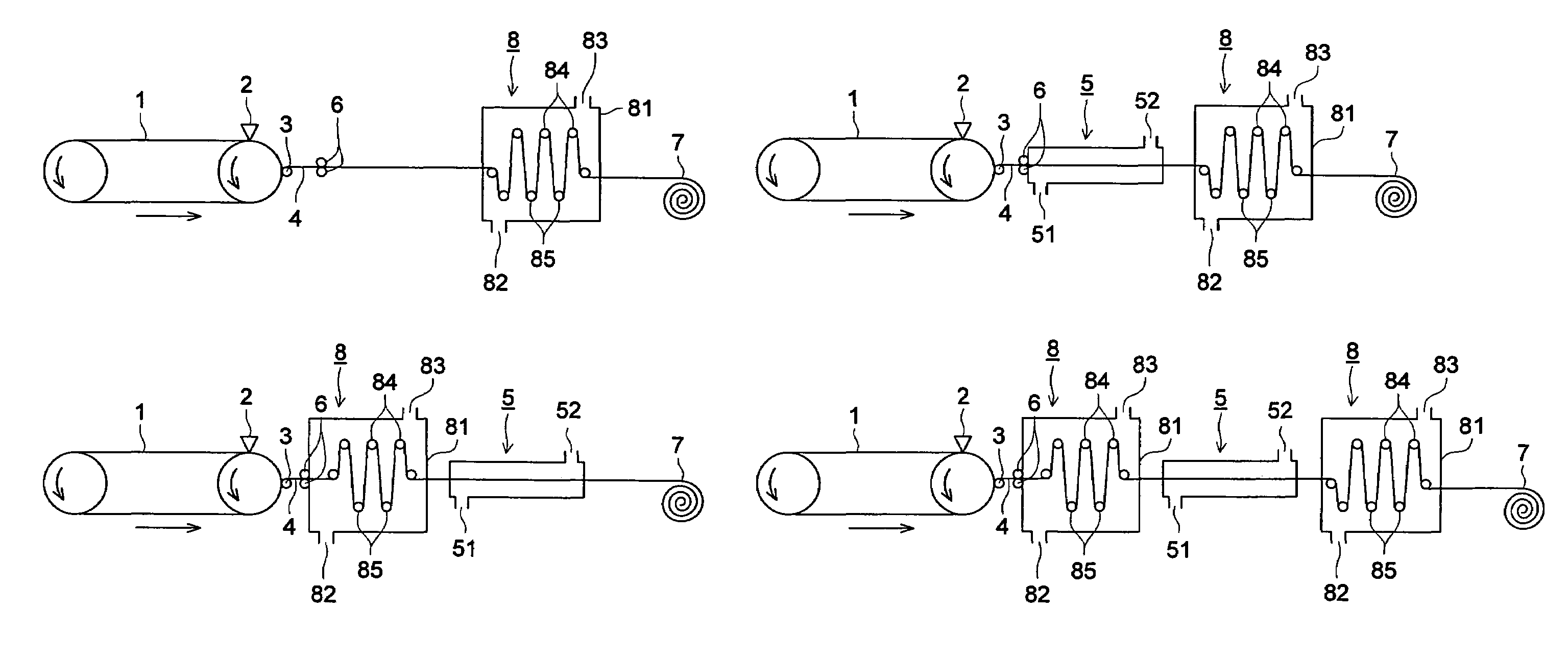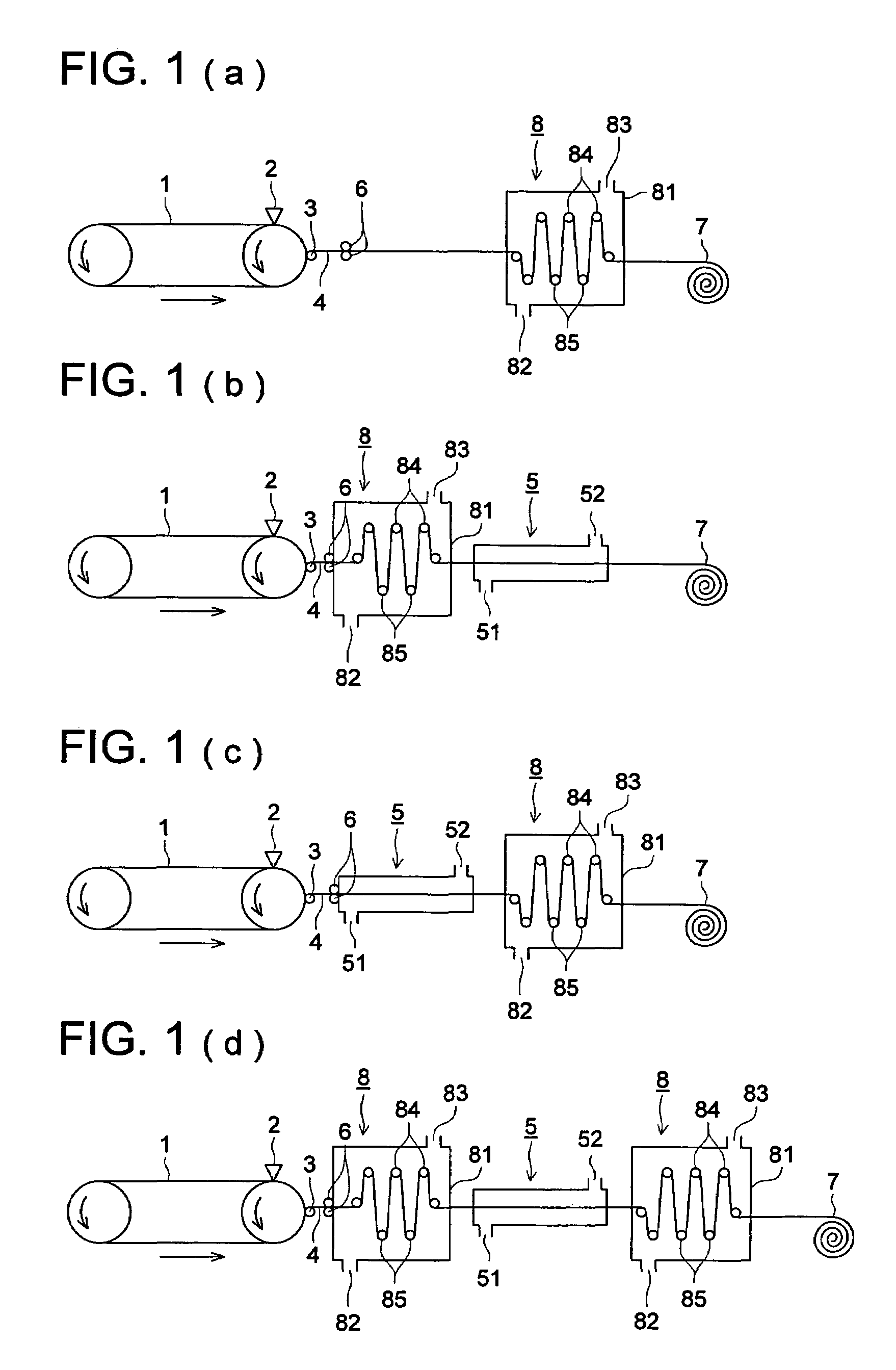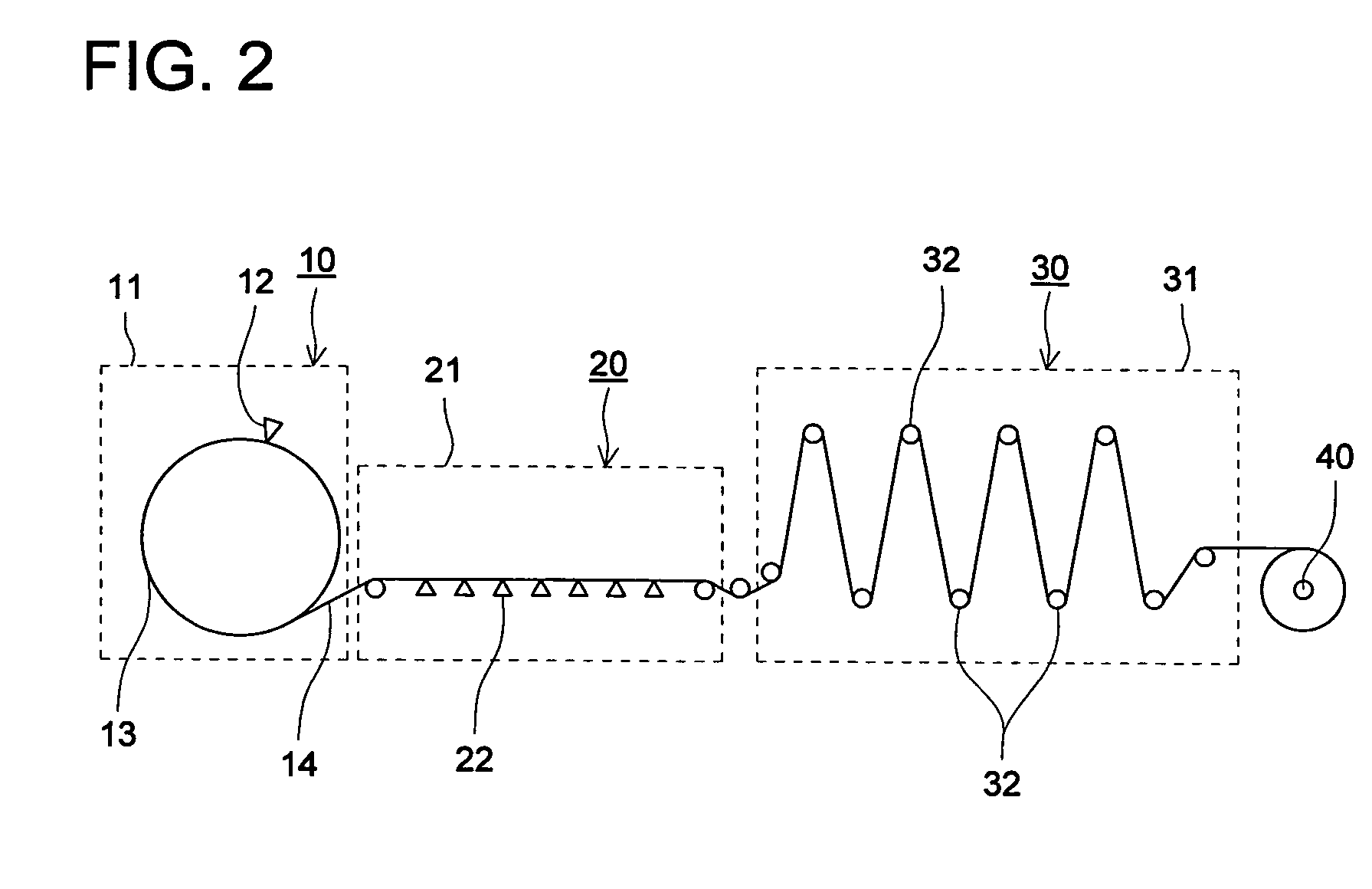Cellulose ester film and its manufacturing method, optical film, polarizing plate and liquid crystal display
a technology of cellulose ester and manufacturing method, which is applied in the direction of instruments, polarizing elements, transportation and packaging, etc., can solve the problems of cellulose ester film, cellulose ester film, lowering transparency, etc., and achieves excellent flatness or appearance, excellent storage stability or productivity, and free
- Summary
- Abstract
- Description
- Claims
- Application Information
AI Technical Summary
Benefits of technology
Problems solved by technology
Method used
Image
Examples
example 1
(Preparation of Silicon Oxide Addition Solutions “a” through “i”)
[0958]Cellulose acetate propionate (total acyl substitution degree of 2.65, an acetyl substitution degree of 1.90, and a propionyl substitution degree of 0.75) of 4.0 parts by weight were added to a mixture solvent of 82.6 parts by weight of ethylene chloride and 11.8 parts by weight of ethanol in a sealed vessel while stirring, and mixed while stirring employing a dissolver for 60 minutes. After that, 1.6 parts by weight of silicon oxide microparticles A through I as shown in Table 1 described later were added with stirring to the resulting mixture, and further stirred for 60 minutes. Thus, silicon oxide addition solutions “a” through “i” as shown in Table 2 were obtained. The average particle diameter of the particles in the silicon oxide addition solutions was measured through a particle size distribution meter LS 13320 series Multi Wave produced by Beckman-Coulter Co., Ltd.
[0959]The silicon oxide microparticles A t...
example 2
(Preparation of Cellulose Ester Film Samples 16 through 23)
(Main Dope C)
[0990]
Cellulose acetate89.5parts by weight(an acetylation degree of 60.9%)Triphenyl phosphate7.0parts by weightBiphenyl diphenyl phosphate3.5parts by weight
[0991]The above materials were dissolved in the following mixture solvent and stirred to obtain a dope with a solid concentration of 23.0% by weight.
[0992]
Methylene chloride82parts by weightMethanol15parts by weightn-Butanol3.0parts by weight
[0993]The resulting dope was filtered using a filter paper “#63” manufactured by Toyo Filter Paper Co. Ltd., further filtered using a sintered metal filter “06N” produced by Nippon Seisen Co., Ltd., and further filtered using a sintered metal filter “12N” (with a pore diameter of 40 μm) produced by Nippon Seisen Co., Ltd.
(Preparation of In-Line Addition Solution X)
[0994]
2(2′-Hydroxy-3′,5′-di-tert-5.40parts by weightbutylphenyl)-5-chlorobenzotriazole2(2′-Hydroxy-3′,5′-di-tert-10.79parts by weightamylphenyl)-5-chlorobenzotr...
example 3
[1016]The following antireflection layer solution was coated on the hard coat film samples 16 through 23 obtained above, to prepare hard coat film samples 16′ through 23′ with an anti-reflection layer.
>
[1017]
Titanium tetra-n-butoxide250parts by weightEnd group-reactive dimethylsilicone0.48parts by weightoil L-9000 produced by NipponUnicar Co., Ltd.)Aminopropyltrimethoxysilane KBE 90322parts by weight(produced by Shinetsu Kagaku Co., Ltd.)UV-curable epoxy resine21parts by weightKR 500 (produced by Asahi Denka Co., Ltd.)Propylene glycol monomethyl ether4900parts by weightIsopropyl alcohol4840parts by weight
[1018]
Titanium tetra-n-butoxide310parts by weightEnd group-reactive dimethylsilicone oil0.4parts by weightL-9000 produced by Nippon Unicar Co., Ltd.)Aminopropyltrimethoxysilane KBE 9034.8parts by weight(produced by Shinetsu Kagaku Co., Ltd.)UV-curable epoxy resine KR 5004.6parts by weight(produced by Asahi Denka Co., Ltd.)Propylene glycol monomethyl ether4900parts by weightIsopropyl...
PUM
| Property | Measurement | Unit |
|---|---|---|
| height | aaaaa | aaaaa |
| particle diameter | aaaaa | aaaaa |
| thickness | aaaaa | aaaaa |
Abstract
Description
Claims
Application Information
 Login to View More
Login to View More - R&D
- Intellectual Property
- Life Sciences
- Materials
- Tech Scout
- Unparalleled Data Quality
- Higher Quality Content
- 60% Fewer Hallucinations
Browse by: Latest US Patents, China's latest patents, Technical Efficacy Thesaurus, Application Domain, Technology Topic, Popular Technical Reports.
© 2025 PatSnap. All rights reserved.Legal|Privacy policy|Modern Slavery Act Transparency Statement|Sitemap|About US| Contact US: help@patsnap.com



